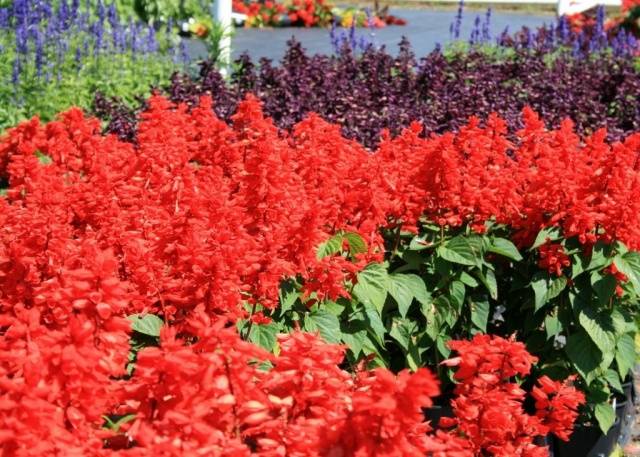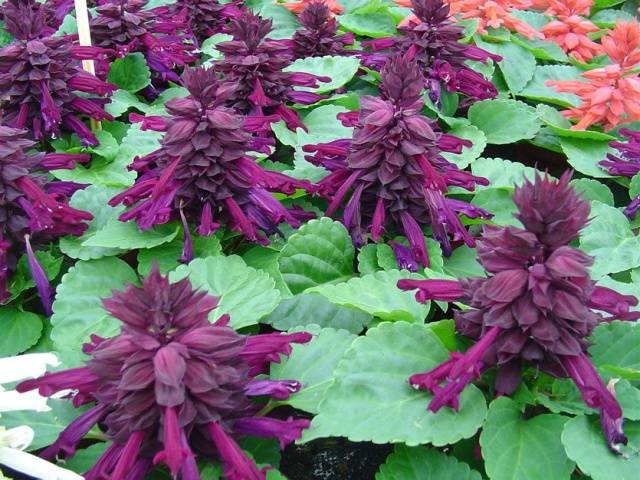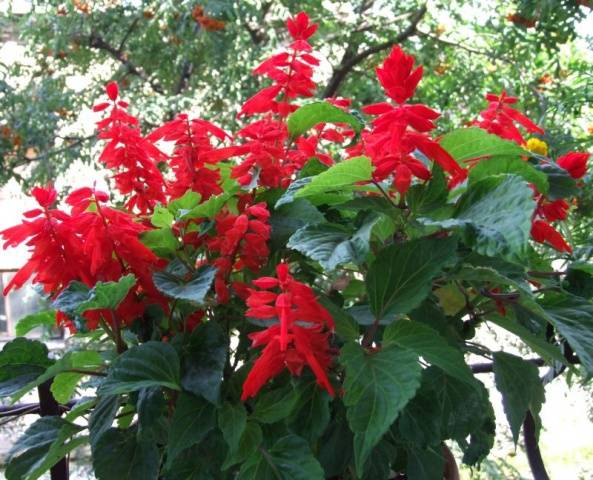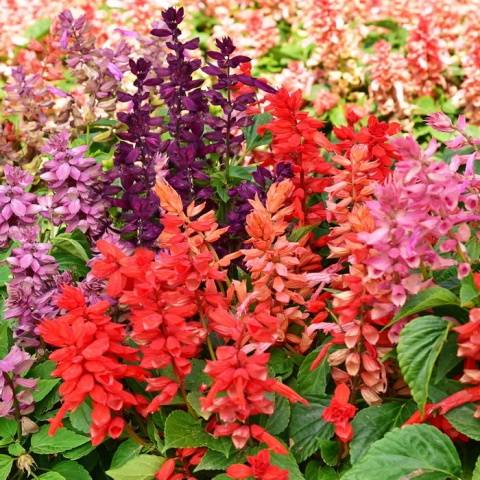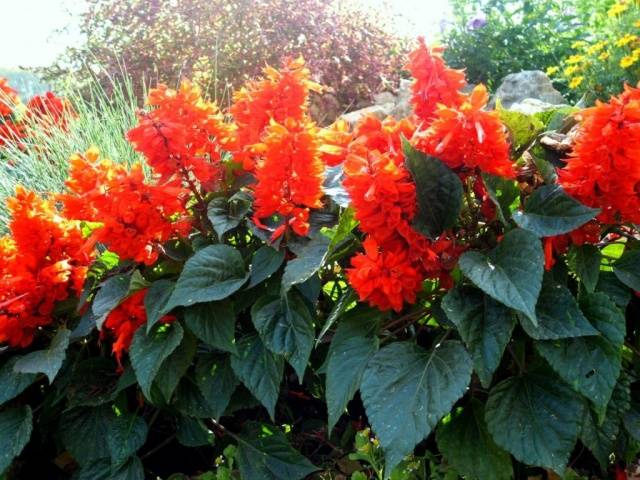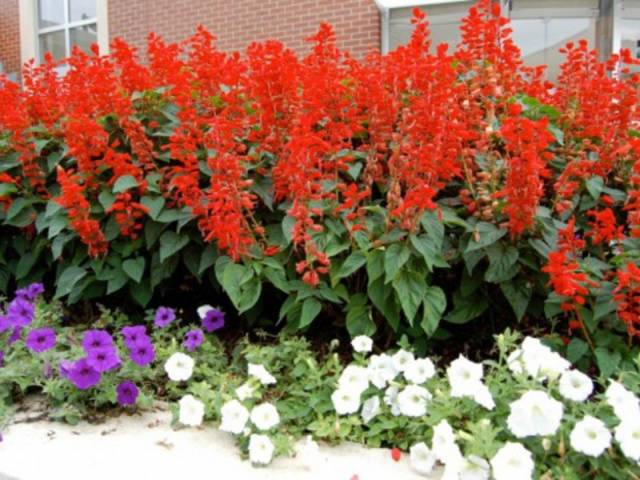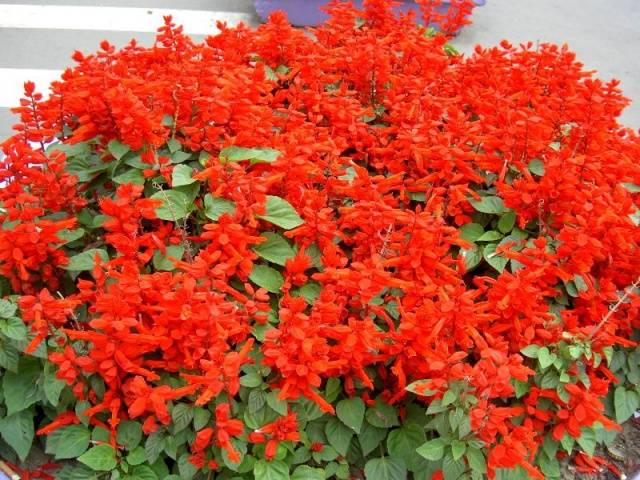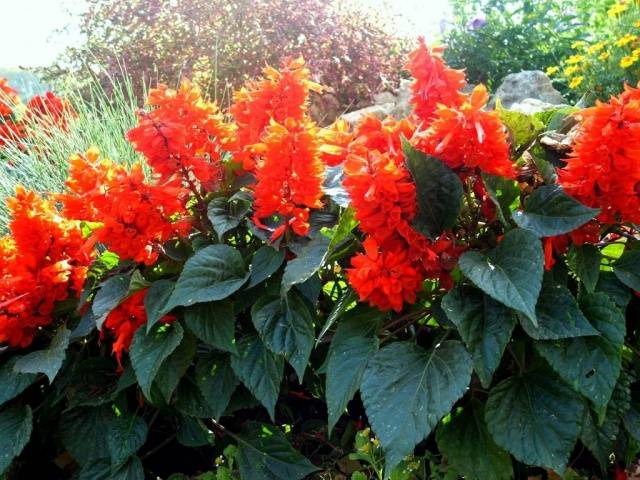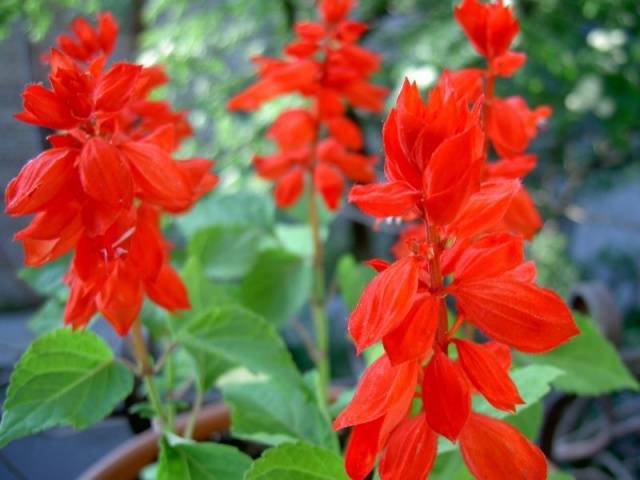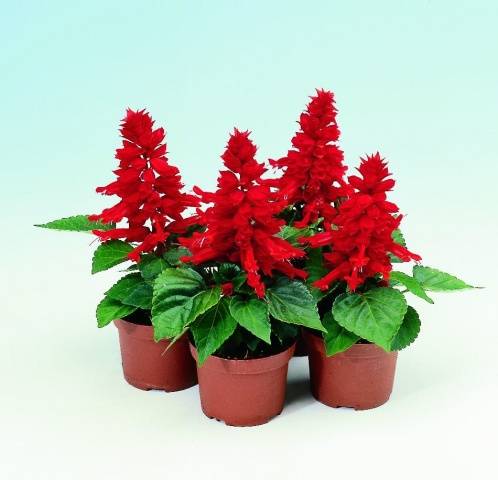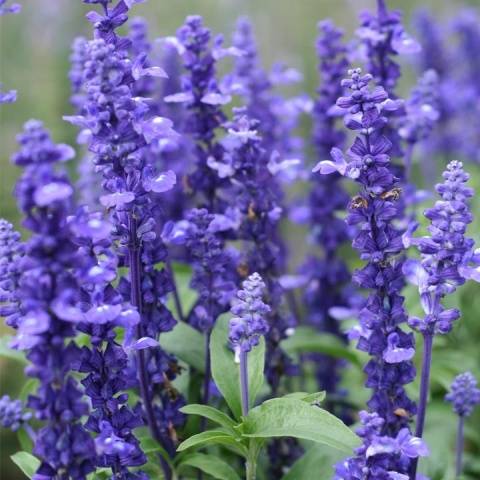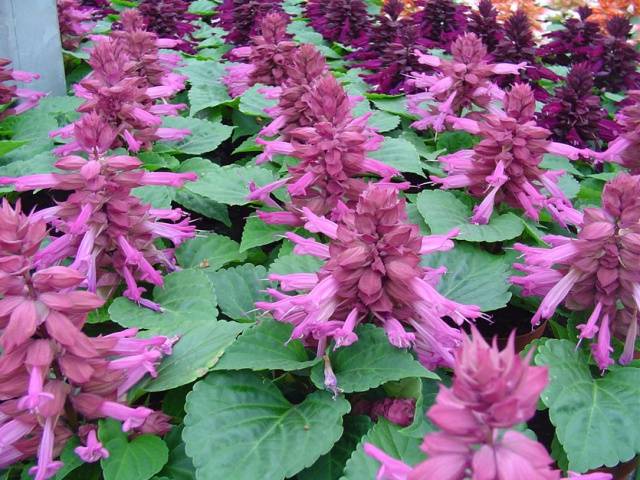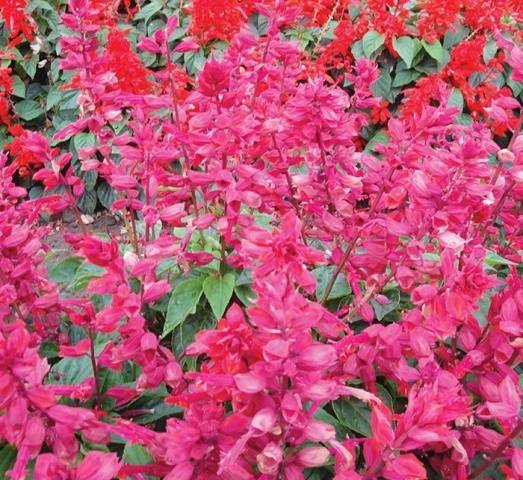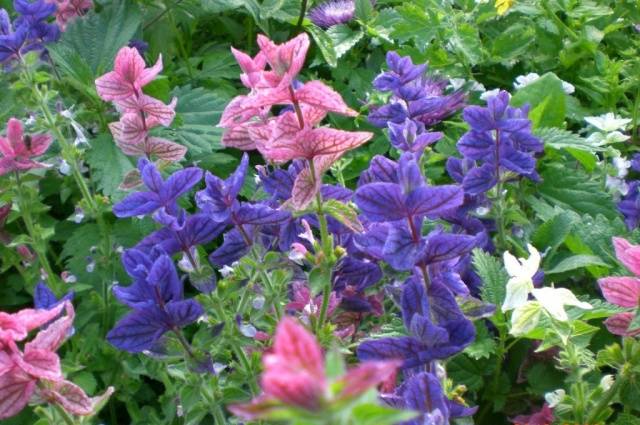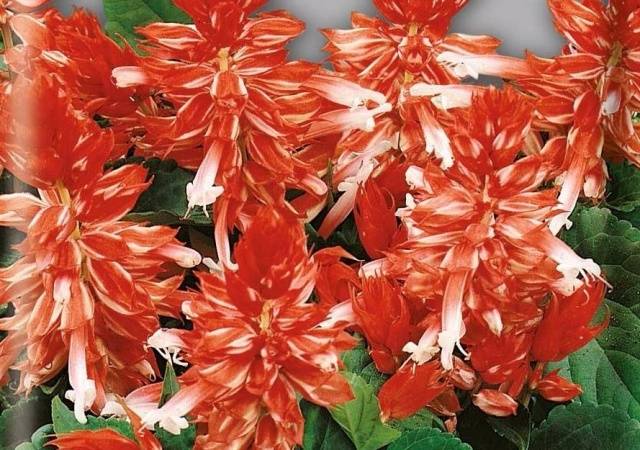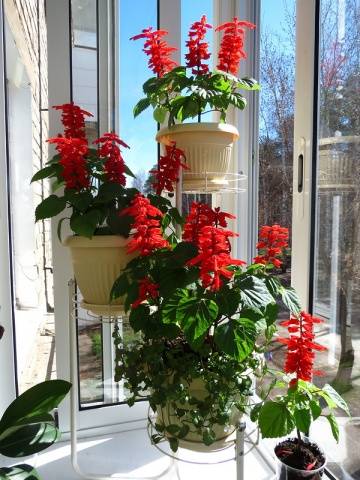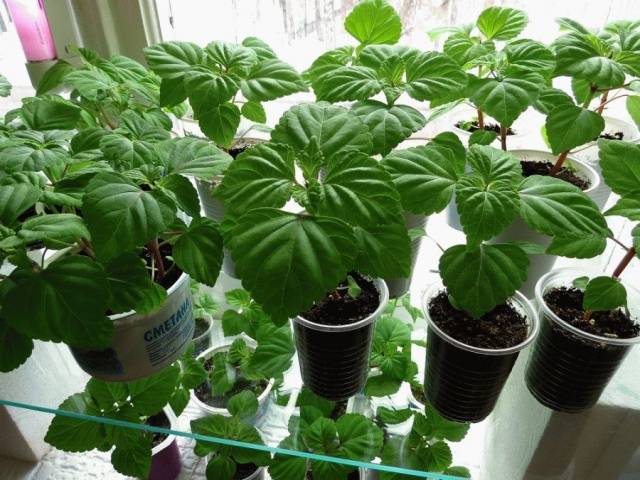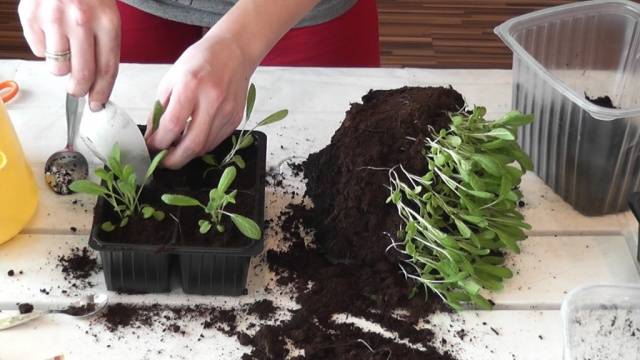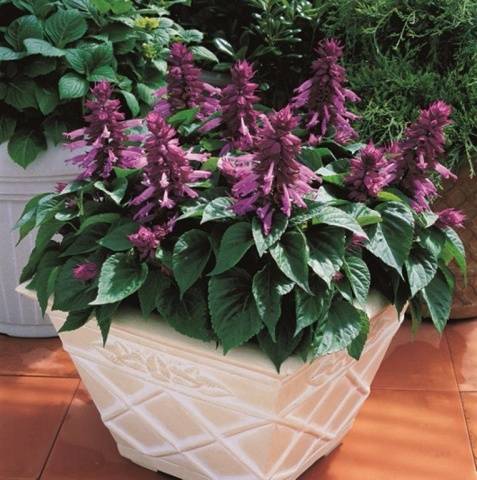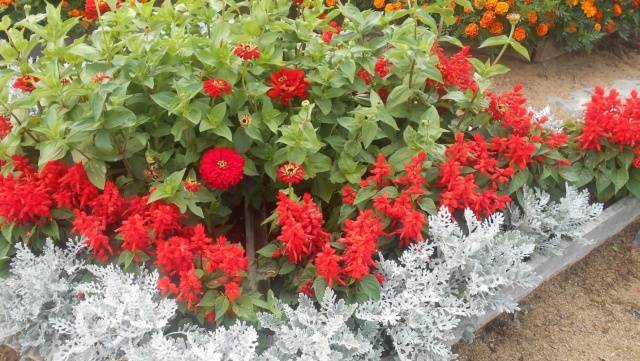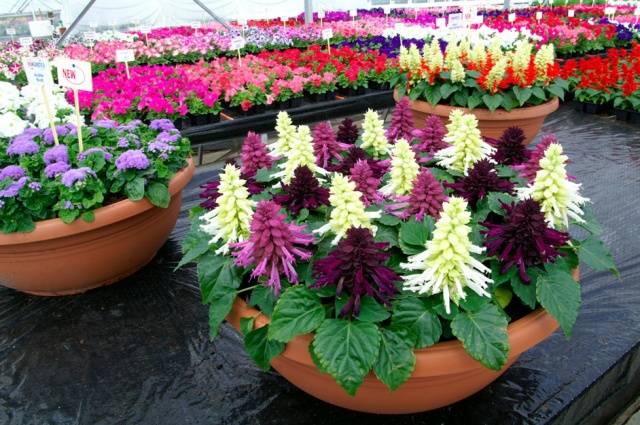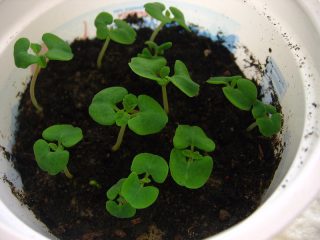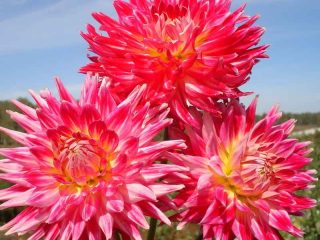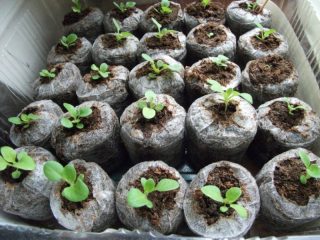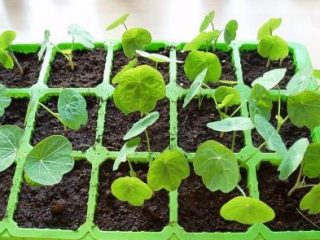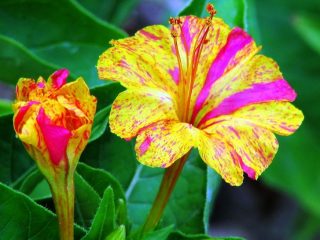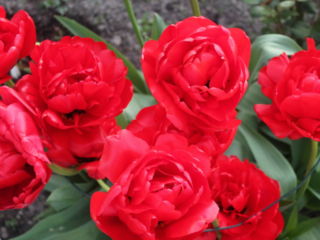Many people know about the medicinal plant called Sage, but about its cultivated variety Salvia - Not everyone. Today, there are about eight hundred species of this beautiful flower: Salvia is actively used by landscape designers, serves to decorate balconies and gazebos, and plays an important role in medicine. The most common species are Salvia sparkling (or Salvia brilliantis) and medicinal Salvia. Growing cultivated Sage is not difficult; this plant requires the most basic care, so anyone can have beautiful, unpretentious flowers in their garden.
This article will examine Salvia brilliantis in detail, provide a description of the species, photos of flowers, recommendations for sowing and caring for this plant. Here we will also talk about the most popular varieties of cultivated sage, which are most often used for decorating flower beds, borders, and in potted arrangements.
Features of the view
Salvia splendor was brought to Europe from the tropics back in the eighteenth century.Since then, this plant has been cultivated in almost all corners of the Old and New Worlds. In nature, sage is a perennial, but in temperate continental climates it is grown only for one season (a tropical flower cannot withstand harsh winters).
Decorative sparkling salvia does not have any medicinal properties, but flower growers love it for its catchy appearance, unpretentious “character” and many bright, rich colors.
Detailed description of the cultural variety
If we talk about decorative varieties, they have the following characteristics:
- the species belongs to the family of essential oil spongy plants from the Lamiaceae family;
- the shape of the bushes is reverse pyramidal, the plants are compact, well-leafed;
- each shoot of shining sage ends in a large inflorescence;
- the height of sage can vary from 25 to 80 centimeters depending on the variety;
- most of the Salvia stem is occupied by an inflorescence in the form of a spikelet;
- leaves are petiolate, entire, arranged in pairs - opposite each other;
- Salvia stems are erect, herbaceous, and have a characteristic feature - a tetrahedral cross-section;
- the root system of sage is powerful and well branched;
- The growing season for Salvia is quite long - 100-120 days, so in Russia the flower is grown through seedlings;
- sparkling sage begins to bloom in mid-June and ends with the onset of the first frost;
- the inflorescences are spikelets, the flowers themselves have a tubular structure, collected in pyramids, reaching a length of 20 cm;
- in each inflorescence of Salvia sparkling, from 30 to 90 small flowers are formed;
- modern selection allows you to grow Salvia in almost any shade: red, salmon, white, cream, lavender, dark purple, burgundy, orange;
- the fruit of Salvia sparkling - four nuts with seeds;
- Seeds of varietal Salvia (non-hybrid species) can be collected and sown next season, their germination remains viable for five years.
Gardeners consider the big advantage of Salvia sparkling to be its long flowering period - all summer the bright spots of the bushes will decorate borders, borders and flower beds. The undoubted advantage of the flower is the possibility of growing it in flowerpots, pots and boxes for the purpose of decorating window sills, balconies and verandas.
Cultivated sage varieties
Today, all varieties of Salvia sparkling are usually divided into two large groups: tall and short.. The first group is flowers reaching a height of 70-80 cm; they are usually used to decorate gardens and flower beds. Low-growing sage is a compact plant, growing up to a maximum of 50 cm. These flowers are used to decorate borders and borders, they are planted in pots and flowerpots, Salvia is also used for carpet flower beds and flower beds.
There are many varieties and varieties of shining sage, but flower lovers prefer the brightest and most beautiful ones. Photos and descriptions of exactly these colors will be given below.
Fire ball
This flower grows up to 40-50 cm in height, and the diameter of the bush is usually 35-45 cm. The plant is compact, the inflorescences are slightly disheveled, not too dense, the length of the spikelets is 16-20 cm.
This variety of Salvia blooms with a brilliant red-coral color.
Vesuvius
This Salvia variety is very similar to the previous one, but you can distinguish the bushes by their leaves. Vesuvius has large leaf plates, their length can be 7-10 cm, and their width can be up to 9 cm.
The inflorescences are painted in a fiery red hue, they are denser, the length of the spikelets is slightly shorter than that of the Fireball. The sparkling Salvia of this variety begins to bloom in early August.
Bonfire
The maximum height of this annual Salvia is 60 cm. The bushes are compact, dense, bright - they very often decorate ceremonial flower beds, flower beds, borders or ridges.
Bonfire blooms right up to frost, and the first inflorescences bloom in early July. The variety can be grown on balconies, but you should remember about regular watering and loosening the soil.
Carabinieri
Sage is a classic color – red. Carabinier is suitable for well-lit places, tolerates drought well, blooms from mid-summer to late autumn.
The bushes of this Salvia shiny are very compact - their height reaches a maximum of 30 cm. Seedlings can be planted densely - according to a 20x20 cm pattern.
Zurich
Another sparkling Salvia with deep red blooms. The Zurich variety is taller than the other varieties listed above. The height of its bushes can reach 60-70 cm.
Accordingly, the spikelets with inflorescences of Salvia are longer. The entire bush is well leafy and covered with many large flowers. About a hundred fiery spongy inflorescences can bloom simultaneously on the central shoot.
Scarlet
Salvia sparkling Scarlet flower is an annual plant intended for flower beds, balconies and borders. The variety continues to bloom from mid-July until the first frost.
The inflorescences are bright red, the bushes are compact and well leafy.
Rio
Salvia splendor is lavender in color. The bushes of this sage are compact, reaching a maximum height of 25-30 cm. The spikelets are short, dense, and the leaves are long and sharp.
Not only the inflorescences of Salvia Rio are colored purple, but also its tetrahedral stem.
Splendes Pink
This variety of Salvia sparkling is one of the most common. The inflorescences of Splendes are pinkish-lilac. The bushes are compact, densely leafy, reaching a height of 30 cm.
The flower loves light and moisture. It pleases with its flowering from mid-summer until late autumn.
Charm pink
The shape of Sharma's bush is reverse pyramidal, the bushes are compact, densely leafy, reaching a height of 30 cm.
The Salvia Charm variety is a low-growing variety, so its growing season is only 60-65 days. You can plant sage seedlings in the ground in early May, and they will bloom all summer, until the first frost.
Horminum
A special feature of this Salvia variety is the bracts, which are colored in different colors: they can be blue, white, purple or pink.The bushes are compact, their maximum height is 50 cm.
Salvia Horminum also loves warmth, abundant watering and sun, but, unlike other species, this variety can withstand low temperatures. The plant begins to bloom 70 days after germination.
Dwarf
Very compact (up to 25 cm high) bushes are suitable for growing on balconies and in miniature carpet flower beds. Dwarf's specialty is its unusually variegated and luscious blooms.
Pyramidal inflorescences can be painted in a deep red shade - Dwarf red, or in a combination of red and white colors - Dwarf mix.
Growing cultivated sage
Salvia brilliantis is an unpretentious plant. All this flower needs: water, sun, loose soil and warmth. Therefore, the main task of the grower is to provide the plant with all the necessary conditions. Sage does not require special care; it is able to withstand almost any “vags” of weather, from drought to high humidity.
Planting flowers
First of all, it is necessary to grow seedlings, since Salvia in the middle zone is grown only by seedlings. Sowing seeds must be done already in February, because flowering will begin only 2-3 months after emergence.
To plant Salvia, prepare small containers with expanded clay or other drainage material poured into the bottom. Loose and nutritious soil is placed on top, which is best purchased at a flower shop. The soil is warmed up at room temperature. The next day, Salvia seeds are sown and the soil is sprayed with a spray bottle.
After sowing, the seeds are simply pressed lightly with your hand and the box is covered with film. At a temperature of 20-25 degrees, sage seeds need to be kept for several days until shoots appear.
They remove the film, place the boxes on the windowsill and wait for the flower seedlings to grow. By the way, light-loving sage needs to be illuminated for at least 12 hours a day, so you will need phytolamps.
At the stage of two true leaves, Salvia sparkling needs to be picked. The soil is the same, but the containers should be a little deeper. Immediately after picking, the boxes are covered with paper, which can be removed after 2-3 days.
Salvia is transferred to the ground when the weather stabilizes and the threat of return frosts has passed. This is usually done in May. The planting pattern is dense - 20x20 or 25x25 cm. The soil needs to be loose, well-permeable to air. A site for Salvia is selected that is sunny and protected from drafts.
Flower care
Caring for shiny Salvia is very simple; even a novice gardener can do it:
- Watering during periods of drought. Usually natural rainfall is sufficient for sage, but in very dry summers it is necessary to water the flower bed occasionally to refresh the flowers.
- Weeds dangerous for young plants, so until the sage seedlings get stronger, the grass is removed regularly. Subsequently, loosening the soil after each rain or watering is sufficient.
- You can mulch the soil if this does not disturb the composition of the flowerbed. Mulch will save Salvia from drying out and protect it from weeds.
- A couple of times during the summer, flowers need to be fed with complex mineral fertilizer. It is better to dilute the fertilizer in water.
You should not plant Salvia sparkling in shaded areas or under tall plants - it will not bloom in such conditions. Otherwise, sage is very unpretentious and can withstand a lot.
Conclusion
Salvia brilliantis is an excellent option for both novice gardeners and experienced landscape designers. This flower is unpretentious, but very bright and noticeable. It will be an excellent addition to flower beds, borders and edgings; cultivated sage can be used to decorate balconies and verandas, and to grow it in flowerpots and boxes.
How to grow Salvia is described above - it is not at all difficult. All that remains is to decide on the type of flower, because there are many varieties of sage.
